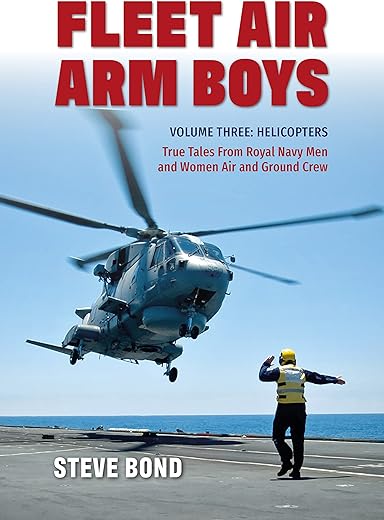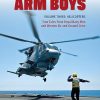Fleet Air Arm Boys Volume Three: Helicopters – True Tales From royal Navy Men and Women Air and Ground Crew (Fleet Air Arm Boys, 3)
£19.00£23.80 (-20%)
Helicopters have been going to sea with the Royal Navy’s Fleet Air Arm for over 70 years. Initially used for search and rescue (SAR) duties from aircraft carriers, the rapid development of both the helicopters and service experience resulted in them taking on the vital anti-submarine (and later anti-ship) attack roles.
The 1956 Suez campaign saw the first operational use of Whirlwind helicopters for the insertion of troops by air into a battle zone, a capability which was expanded with more helicopters such as the Wessex, Sea King and today’s Merlin. Through their vital role in the 1960s Indonesian Confrontation, the Commando helicopter force became universally referred to as the ‘Junglies’, by which name they are still known today.
It is often said that if either of the 1982 Task Force aircraft carriers had been lost the Falklands War could not have been won. The same would surely have been true without helicopters. Their vital tasks, including inserting Special Forces behind enemy lines, protecting the Task Force from Exocet missile attack and recovering wounded troops whilst under enemy fire, are rightly hailed as being instrumental. At home, the essential SAR effort by both the Royal Navy and their RAF counterparts has resulted in incredible stories of saving lives against the odds.
Royal Navy destroyers and frigates have also long since benefitted from having their own helicopter Flight aboard. Frequently operating in extremes of weather, flying a Wasp, Lynx or today’s Wildcat from and back to a heaving deck is every bit as risky as flying fixed-wing aircraft off the carriers of old using the cat and trap system.
Once dismissed as a novelty, the helicopter has more than proved itself. Indeed, for ten years until the arrival of the Queen Elizabeth-class aircraft carriers, the Fleet Air Arm’s operational force was entirely rotary-wing. Today’s Merlins and Wildcats, with their dedicated aircrew, maintenance and support staff continue to demonstrate just how vital an asset the helicopter has become.
Here are the words of the men and women themselves, skilfully brought to life by Steve Bond and profusely illustrated in colour and b/w.
Read more
Additional information
| Publisher | Grub Street Publishing (31 July 2022) |
|---|---|
| Language | English |
| Hardcover | 288 pages |
| ISBN-10 | 1911667270 |
| ISBN-13 | 978-1911667278 |
| Dimensions | 24 x 3.4 x 16.5 cm |









by Bob Crane
Although an ex-FAA ‘fixed-winger’, I have marvelled at the exploits of our rotary-wing brethren as collated superbly by Steve Bond and wife Heather in FAA Boys Vol 3. ‘Normal’ every-day/night operations from, say, the small flight deck of a frigate or destroyer is exacting for air and ‘ground’ crews alike, but when these take place in rough seas and bad weather, and especially at night, it requires considerable concentration, skill, courage and determination by all involved. However, as well as the launch and recovery phases, the actual missions have to be performed. From searching for and attacking enemy sub/surface forces, through dropping SAS/SBS troops behind enemy lines, to having to play ‘musical flight decks or icebergs’ when fuel gets low – and not forgetting the inevitable aircraft and ship emergencies – Vol 3 covers all sorts of incredible stories, all told by those who bravely carried out or supported such operations. It serves as a ‘must-read’ complement to Vols 1 and 2, recalling the history of FAA rotary-wing from its humble beginnings with the Hoverfly and Dragonfly to operating the modern-day, world-class Merlin and Wildcat. Roll on Vol 4!
by clootie
Top quality production. I love the way the narrative is strung together by personal reflections. Very well done and accurate detail. Well illustrated from largely personal photograph collections.
by Anthony Wilson
An absorbing account of helicopter flying from the 1950’s to the present day, written by the aircrew who did it and the ground crew who supported them. From the ordinary routine to the more dangerous exploits of those flying in war zones. A thoroughly worthwhile read for anyone interested in this novel form of aviating